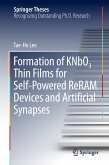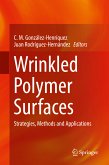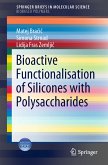This book offers a comprehensive treatment of the molecular design, characterization, and physical chemistry of soft interfaces. At the same time, the book aims to encourage the fabrication of functional materials including biomaterials. During the past few decades there has been steady growth in soft-interface science, and that growth has been especially rapid in the twenty-first century. The field is interdisciplinary because it involves chemistry, polymer science, materials science, physical chemistry, and biology. Based on the increasing interdisciplinary nature of undergraduate and graduate programs, the primary goal of this present work is to serve as a comprehensive resource for senior-level undergraduates and for graduate students, particularly in polymer chemistry, materials science, bioconjugate chemistry, bioengineering, and biomaterials. Additionally, with the growing interest in the fabrication of functional soft materials, this book provides essential fundamental information for researchers not only in academia but also in industry.
Dieser Download kann aus rechtlichen Gründen nur mit Rechnungsadresse in A, B, BG, CY, CZ, D, DK, EW, E, FIN, F, GR, HR, H, IRL, I, LT, L, LR, M, NL, PL, P, R, S, SLO, SK ausgeliefert werden.









